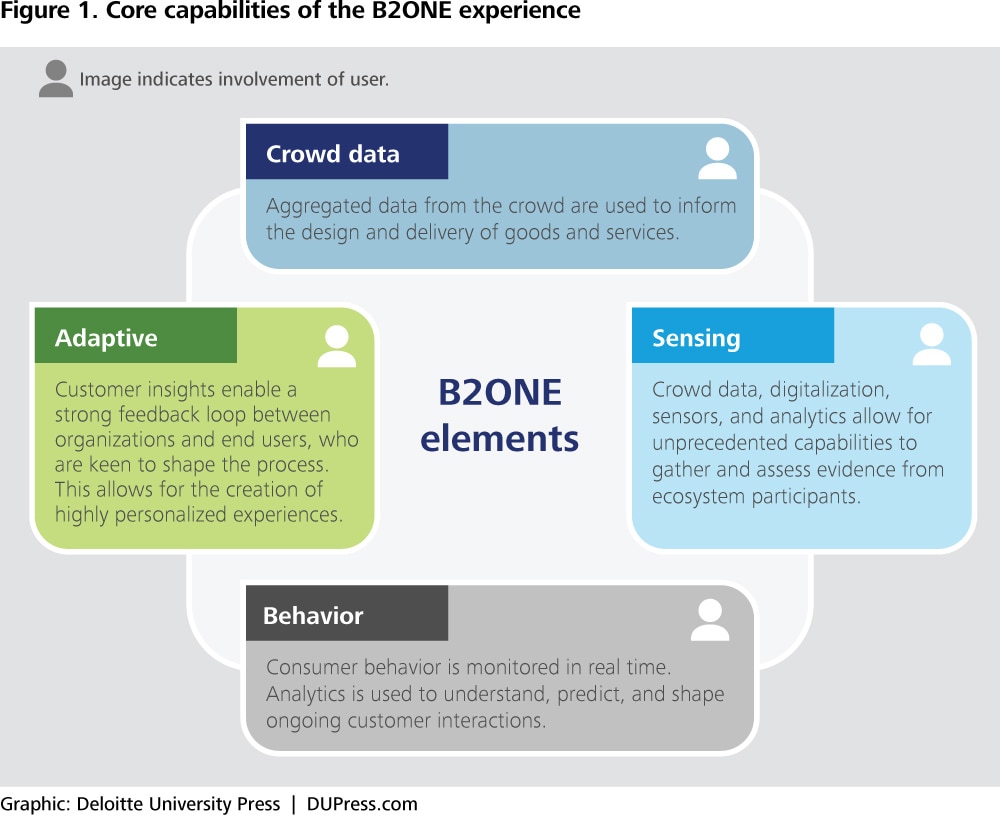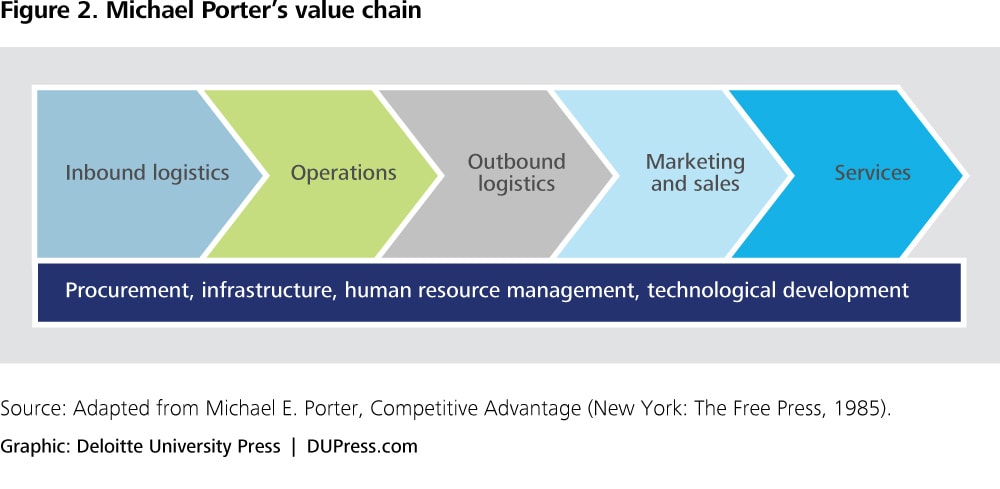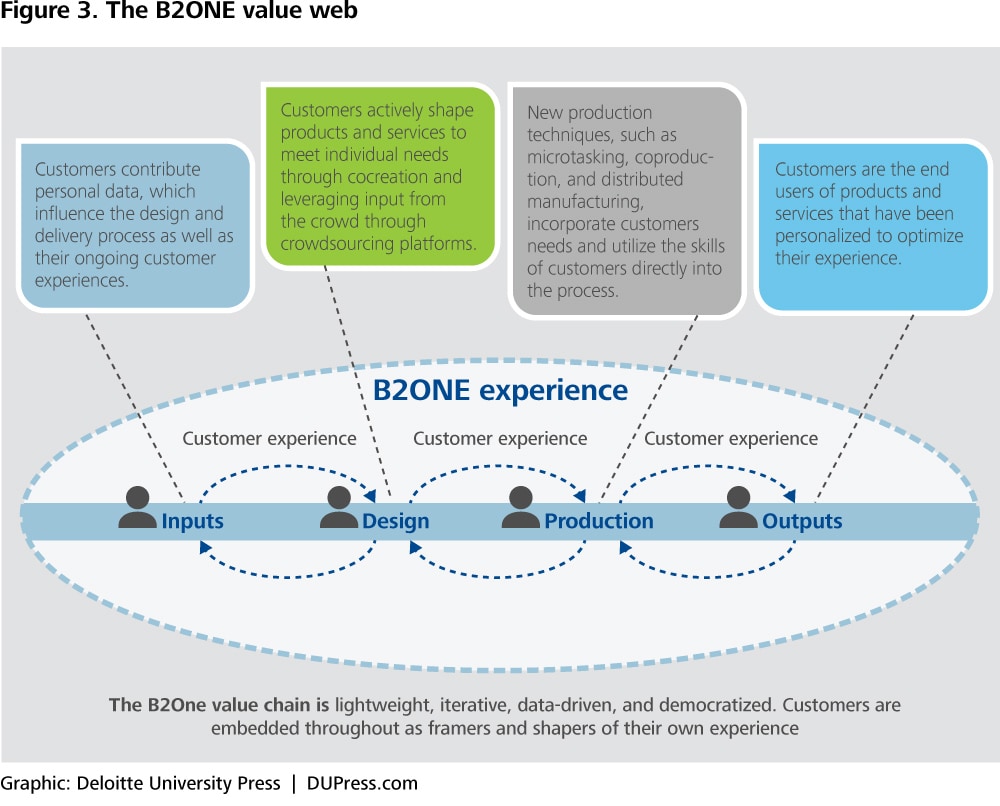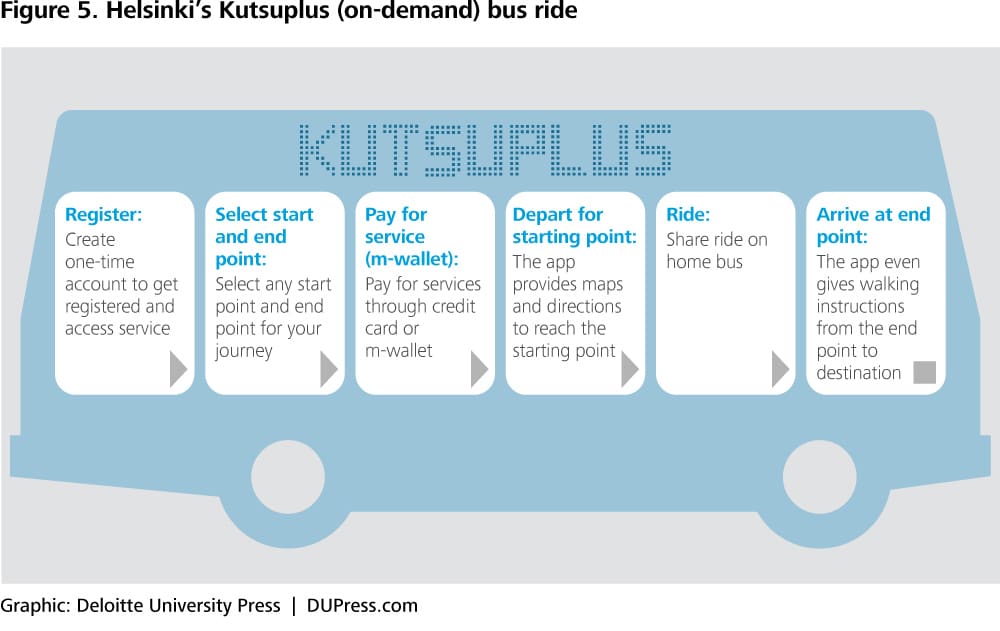A billion to one: The crowd gets personal has been saved

A billion to one: The crowd gets personal Deloitte Review Issue 16
27 January 2015
The creation of products and services derived from crowd-based insights is the foundation of the “billion-to-one” experience. Taking your characteristics and behavior and contextualizing them with data from many thousands of other individuals allows designers to deliver products and services that are, or at least feel, unique.
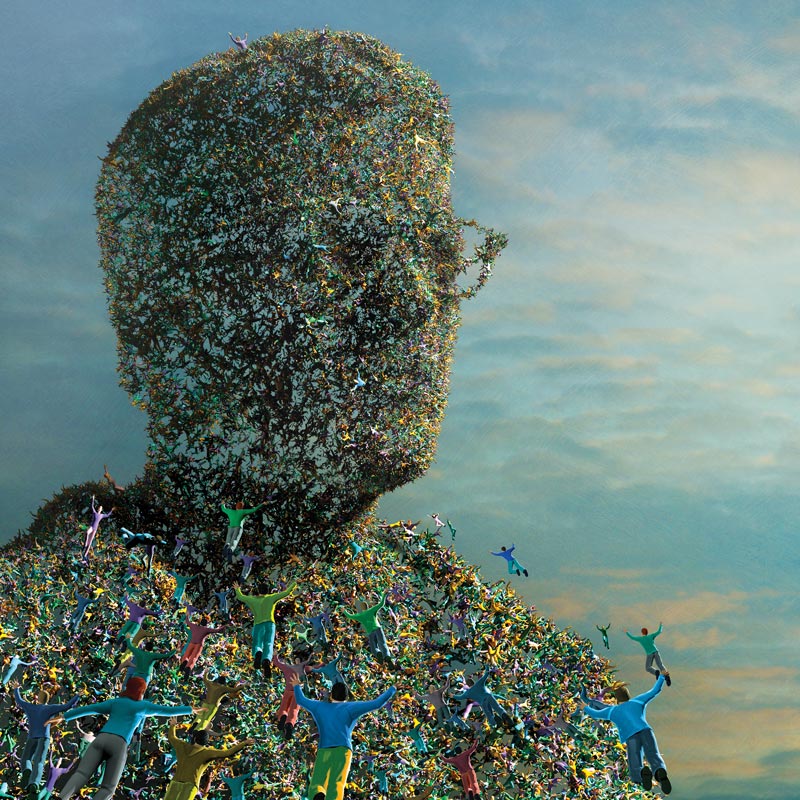
The world is home to more than a billion smartphone users.1 Internet platforms are bringing those billion people together to share ideas and cocreate millions of apps that entertain us, simplify our daily tasks, and nudge us toward healthier living.
Through mobile devices—and soon, sensors and the Internet of Things—the crowd is becoming personal.
Deloitte Review, issue 16
See the full issue
Join the conversation
#DeloitteReview
Consider Waze, a transportation app that helps drivers find the most efficient routes in cities around the world. By actively sharing reports through the app or simply keeping it open while driving, users help develop a real-time landscape of the traffic environment, including congestion, speed traps, accidents, and any other hazards. Drivers need only enter their destination to access this knowledge from the crowd and get the best possible route to take at that time.2
But it’s not just traffic information that’s driving the “personalization” of big data. We have digital personae generated by our digital exhaust as well, and these are constantly being defined and refined by a growing universe of sensors, bar codes, and cameras that track our every move.
Taking your specific characteristics and behavior and contextualizing them with data on thousands or millions of other individuals allows designers to deliver products and services that are, or at least feel, unique. Auto insurers, for instance, can track the driving behavior of their customers through GPS devices and use the insights for actuarial pricing and segmentation. Such data also can be meshed with insights from behavioral economics to offer customers useful products such as personalized progress reports or performance comparisons with a peer group, encouraging better driving.3
We call the creation of unique customer products and services derived from crowd-based insights the “billion-to-one,” or B2ONE, experience.
Core capabilities of the B2ONE experience
The B2ONE experience involves a set of core capabilities (see figure 1) that are leading to fundamentally new ways of delivering value to consumers and citizens.
Crowd data: Aggregated data from the crowd form a critical component of B2ONE models. Organizations can tap the data and brains of the crowd and use the insights gleaned to provide a highly customized user experience. Tranquilien, a sort of Waze for rail transit users, helps passengers find vacant seats in Paris’ crowded subways. Its algorithms are based on multiple data sources, most prominently real-time, crowdsourced data. As with Waze, users input their routes and then use the app to plan their travel.4
Sensing: Sensing, digitization, and related analytics offer us an unprecedented ability to gather and assess evidence in real time. For instance, the Sleep As app for Android devices can wake you at the appropriate time, track and graph your sleeping habits, and warn you if you’re running on a sleep deficit. It also can determine whether you are snoring or talking during your sleep, and it even claims to help detect conditions such as sleep apnea.5
Behavior: Customer behavior analytics monitor actual consumer behavior in real time, providing much more accurate and actionable data than questionnaires. Behavioral science, which studies how people’s choices and behavior can be influenced by how choices are presented, in turn can help turn those data into recommended actions.6 Take iHeal, a wrist-worn biosensor that tracks indicators of arousal or stress in drug addicts. It measures electrical activity in the skin, body motion, skin temperature, and heart rate and then wirelessly transmits these data to a mobile app that delivers personalized drug-prevention intervention to users. Over time, the app creates a repository of information it uses to track behavioral changes and fine-tune its real-time interventions. (For a detailed account on how combining behavioral science and data analytics can help solve problems, see “The last mile” elsewhere in this issue.)
Adaptation: World-class, personalized customer experiences require a strong feedback loop with users. This means collecting data on user behavior, constantly gathering user feedback, and then using these insights to continually improve products and services. AltSchool enables students to develop their own personalized learning plans and then adapts the plans regularly based on what’s working and what’s not, while providing and receiving constant feedback on the plans’ progress (see sidebar “Disrupting the education value chain”).
Upending the value chain
The traditional understanding of process management is anchored in value chain theory, first described by Michael Porter nearly three decades ago.7 The concept positions customers at the end of a process that converts inputs into products or services designed to meet the customers’ assumed needs (see figure 2).
But emergent digital ecosystems overturn this model. Instead of being at the end of the value chain, customers and citizens are engaged as cocreators throughout—and often act as both supplier and customer in the same value exchange. This idea was first articulated decades ago by futurist Alvin Toffler, who in his 1980 book The Third Wave coined the term “prosumer,” a consumer who takes part in the production process as well.8 Toffler argued that pure consumers are a phenomenon of the Industrial Age and that they will be replaced by prosumers, who will coproduce many of their own goods and services.9
Three decades later, Local Motors, a vehicle manufacturer founded in 2007, epitomizes this concept. The buyers of Local Motors’ cars, sport utility vehicles, motorcycles, and even electric skateboards are involved at every stage of the value chain. Taking advantage of digital technologies from computer-aided design (CAD) files to 3D printing, the Local Motors community of customers can participate in conceiving vehicles, creating the designs, and even in the final production. Using in-house tools and parts and an interactive online build manual, anyone who buys a Rally Fighter, the company’s flagship car, can build his or her own vehicle in the company’s microfactory with help from the Local Motors team. Perhaps the most remarkable aspect of the Local Motors model is that the company claims it can produce a customized car or motorcycle in three days.10
Disrupting the education value chain
The B2ONE approach is as relevant to services as it is to products. Consider AltSchool, a San Francisco–based network of K-8 schools whose stated purpose is to redefine the value chain for education, leveraging technology to offer personalized learning experiences.11
At AltSchool, students help personalize their learning plans and adapt them to meet their changing needs, while providing and receiving constant feedback regarding their progress. Students are assessed regularly through computerized tests that are adjusted based on individual skills. Parents are asked for frequent feedback to help inform the redesign of student learning plans. “We are trying to actually advance a new model of a school,” says AltSchool CEO Max Ventila. “Rethinking school starts with rethinking curriculum, and we've reimagined how students should be spending their time in and outside the classroom.”12
Moreover, AltSchool’s future vision for the classroom involves using sensors and audio-visual equipment to assess student language skills automatically, eliminating the need for formal assessments.13
AltSchool is still in its infancy, but it shows how even the most traditional value chains can be disrupted by B2ONE approaches (see figure 4). As more such models emerge, school systems will likely face increasing pressure to rethink the most basic elements of teaching and student engagement.
Local Motors is just one of dozens of companies who treat customers as co-designers. At consumer products manufacturer Quirky, for example, customers can pitch design ideas for new products and, through voting directly, influence what the company makes and sells. The result: hundreds of useful, one-of-a-kind products, ranging from a smart air conditioner to a citrus spritzer.
Such ecosystems grow and evolve organically across social networks, in ways that do not conform to traditional theories of process engineering or lean manufacturing. Companies are learning to incorporate the contributions of individual customers as well as communities. This collaboration creates a dynamic, engaging customer experience (see figure 3).
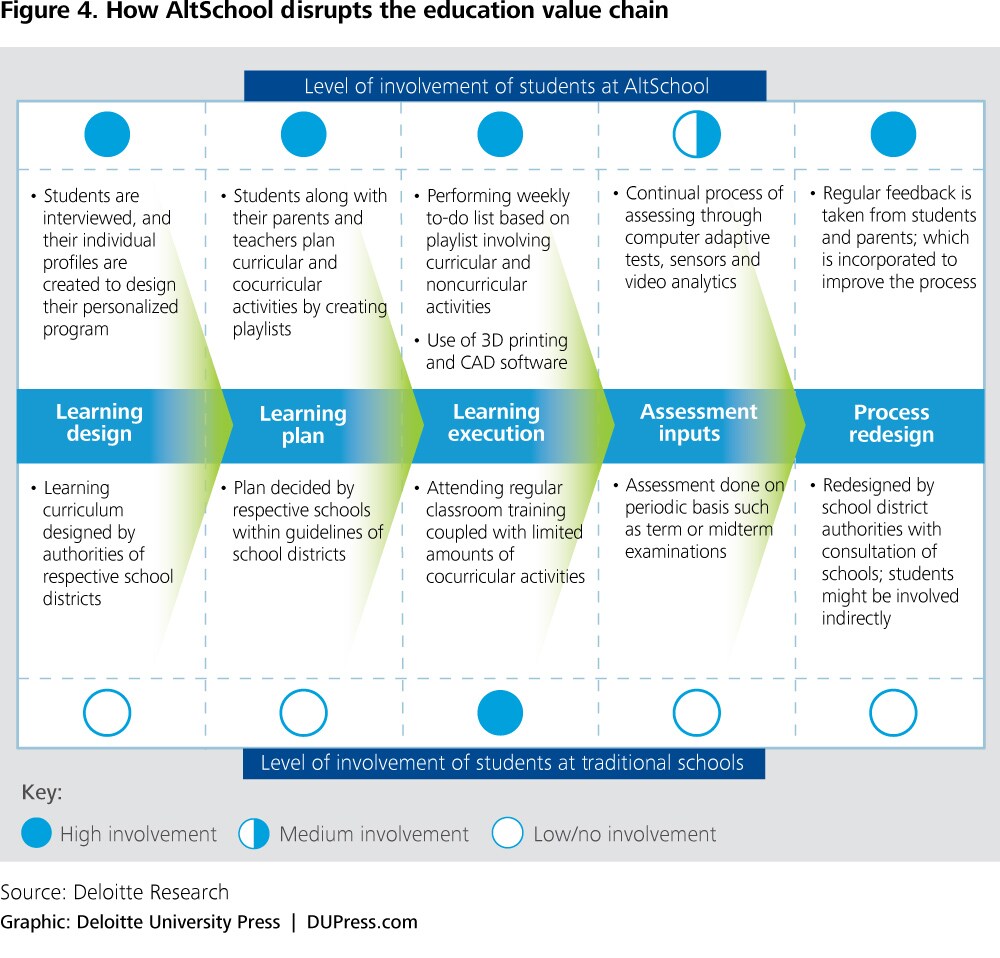
B2ONE in the real world
Organizations delivering B2ONE experiences range from Silicon Valley start-ups to social enterprises to Fortune 500 companies.
Start-ups involved in personalization
In 2001, graduate students from Arizona State University and California State University San Marcos conducted an experiment designed to persuade households to use less energy.14 They tested four messages to determine which had the biggest impact on reducing energy use: save money, save the planet, be a good citizen, or your neighbors are doing better than you in saving energy.
Surprisingly (or not), the first three strategies had little or no impact. However, the last one, which brought social pressure to bear, spurred a significant drop in energy consumption.15
Inspired by this experiment, Harvard University graduates Alex Laskey and Dan Yates created a company, Opower, with a single goal in mind: to use the power of behavioral economics to motivate people to save energy.16
Opower created a customer engagement platform designed to help electric utilities deliver more energy efficiency programs to their customers. Opower’s primary products are home energy reports based on user data and behavioral science principles. The company uses a mix of utilities data on user consumption patterns as well as crowdsourced data from energy users themselves. Its online scoreboard encourages friends to discuss and compare their household electricity use.
Opower then gamifies the experience by allowing energy users to complete challenges, participate in groups, and earn points and badges tied to reduced energy use. Using data from these interactions, Opower constantly tweaks its processes to keep energy users engaged. The company now partners with 95 utilities and claims that its model generates energy savings of 2 to 4 percent, translating into hundreds of millions of kilowatt-hours saved.17
Balloon, an online career skills and learning marketplace, connects students to nearly 15,000 courses provided by leading technology companies and educational providers. With aggregated user data, Balloon aims to address the growing gap between the skills employers need and what employees actually have. It does so by helping people identify career paths and understand the knowledge and skills required by potential employers, and then connecting them to the right courses to acquire those skills.
Companies like these are helping to redefine business models and offer viable alternatives to traditional businesses and governments. The question is whether these kinds of new market makers will remain boutique providers or scale to become national or even global players.
Cocreation platforms
A key way in which B2ONE business processes personalize user experiences is through cocreation, in which a part of the value chain, often design, is created with the help of end users or the crowd.
The T-shirt maker Threadless is based entirely on user innovation. It solicits design ideas from its community of more than 2 million people via social media and by organizing competitions. All T-shirt designs are voted on, and the designs with the most votes are produced and sold to the Threadless community.18
Threadless’s founders realized that even something as mundane as a T-shirt could benefit from the personalization trends sweeping digitally minded consumer businesses. While only four out of every thousand designs submitted are ultimately chosen, customers still love that they’re involved in the creation.19
3D printing represents the extreme end of customized design and production. The 3D printing company Shapeways, for instance, has completely outsourced the design phase to its users. Customers design the products they seek and upload the designs to the Shapeways website for a pricing quote based on the materials involved. Users also can refine their designs with help from “experts” on the Shapeways forum, or they can opt for preexisting designs and make minor changes to them before ordering.20
Incumbents
And what of the big legacy enterprises? The insurance companies that will redesign their coverage and rates if you agree to have a sensor put in your car are but one example of the changes under way. Established companies from nearly every industry are using sensors, digital data, and smartphone interactions to innovate with respect to their products and services.
Amazon, for example, recently gained a patent for a method that preempts customer action and ships the product before the customer orders it; the company calls this “anticipatory shipping.” Although the method has not been deployed, it offers a view of how companies plan to use behavioral data to improve the customer experience.21
Virgin Atlantic uses Bluetooth beacons in airports to send travelers push notifications to improve the airline travel experience. Personalized information, coupled with geolocation, also makes it possible to have a cocktail prepared before the airline traveler arrives or a blanket ready based on where the person will be napping. In the future, beacons may be attached to luggage so that the owners will know where and when to pick it up.22
Companies also use behavioral insights to nudge customers toward making better choices, such as healthier living. British grocer Tesco, for instance, has partnered with Diabetes UK to combat the disease. With the information and consent of Tesco club cardholders, Diabetes UK develops risk assessments for shoppers based on their food-purchasing history and provides them with advice on how to reduce their diabetes risk.23
System designers
Forward-looking planners are taking the rapidly growing disciplines of analytics and behavioral sciences and applying them to complex systems. Consider surface transportation. Today it’s a system designed around infrastructure and vehicles: roads, bridges, subways, and buses. A B2ONE approach might instead design the system around individual mobility—getting each traveler from point A to point B as quickly and efficiently as possible.
This is what the city of Helsinki is attempting to do with its plan to create an on-demand mobility-as-a-service system by 2025. The idea is a real-time marketplace that would allow customers to choose among transport providers and piece together the fastest or cheapest way of getting where they need to go at any time. “The city’s role is to enable that market to emerge,” explains Sonja Heikkilä, a transportation engineer with the city.24
Bus routes would be dynamic, changing based on current demand at any moment (see figure 5). From planning to payment, every element of the system would be accessible through mobile devices.25
Citizens would receive a personalized travel experience irrespective of their mode of transport. Wherever they are in the city, they could access a variety of options with their phone: a ride-share, an on-demand bus, an automated car, special transport for children, or traditional public transit. Residents could purchase “mobility packages” from private operators that would give them a host of options, depending on weather, time of day, demand, and so on. The ultimate goal is a city where no resident actually needs to own a private car to get around quickly and efficiently.
The Digital Human Research Center (DHRC) in Japan aims to create a safer world for children through pioneering work on accidents, the leading cause of childhood injuries. The scientists are studying the main causes of these accidents, their costs to society, and ways in which they can be prevented.26
DHRC Director Dr. Takeo Kanade has reported that how information about childhood accidents is presented to families, schools, retailers, and others makes a big difference on whether behaviors change.27 His team created video simulations that present statistically valid images of how accidents occur, and how better behavior and product design can help prevent them. Online surveys of people who download and view these accident-prevention videos provide the team and other partners (parents, product designers, educators, and physicians) with critical data on what is and isn’t working. With data on things from product performance to personal injuries, governments, businesses, and consumers can collaborate as problem solvers in a digital knowledge management ecosystem.
These are early examples of how the world’s digital exhaust can be recycled into products and services that can help us lead safer and healthier lives.
Creating a B2ONE experience
How can you create a B2ONE experience for your customers? It’s not necessarily easy. Many large companies, encumbered by legacy systems and cultures focused on products rather than customers, have stumbled along the way. The same holds true for government organizations, which tend to be organized around programs rather than citizen needs.
There are five principles, however, that can help even the most tradition-bound organizations get on the path to B2ONE.
1. Shift the organizational focus from products and services to creating an experience.
Successful B2ONE applications focus on solving a problem and creating an experience instead of just selling a product. “Whenever a company moves toward customization, it’s moving into the customer experience business,” explains Bruce Kasanoff, the author of Smart Customers, Stupid Companies.28
Consider automobile manufacturers, which for years have focused on product customization: providing options in color, design, stereo, seat temperature control, and so forth. In the digital age, however, savvy automakers are shifting their customization focus to creating an engaging customer experience.
“Mercedes me” provides one example. Its underlying idea is that the company’s future growth will be driven as much by focusing services around each customer as by new product lines.29 “Mercedes me” offers several personalized services to its customers, including “move me,” “connect me,” and “inspire me.” Each implies a commitment to ongoing customer engagement. “The experience of every single customer is central for us,” says Wolfgang Gruel, one of the chief architects of Daimler’s innovative mobility solutions. “This experience includes new services and goes far beyond the automobile.”30
“Move me” covers Mercedes’ intelligent mobility solutions, including the car-sharing services car2go and car2gether and parking service Park2gether. With “move me,” “Mercedes is trying to create an experience of getting from one place to another, as opposed to the experience of owning a car,” explains Gruel.31
Lastly, “inspire me” allows Mercedes customers to become involved in the development of new technologies and services, interacting with experts and contributing their own ideas and suggestions.
2. Define the customer problem you want to solve.
Because a key part of the B2ONE experience is user involvement, the organization must give customers a compelling reason to become engaged. The best reasons involve solving one of their daily problems better than anyone else.
“Your customers don’t buy from you to have the experience of buying, but to solve a problem,” says Don Peppers, coauthor of Managing Customer Relationships. “I should be able to solve a customer’s problem without them even knowing I’m there.”32
This mindset was front and center when Waze first built its maps app. “We had a complete vision even back then," explains Waze cofounder Di-Ann Eisnor. “We wanted to tap into mobile devices and sharing. It’s one thing to help each other find a restaurant. It’s another to actually change traffic patterns.”33
Waze didn’t set out to build maps per se. Instead, the goal was to find the best routes for getting around.34 Early on, the Waze team made it a bit of a game to get people to drive to areas that hadn’t been covered yet. These digital-age equivalents of Lewis and Clark drove on unmapped roads for the benefit of subsequent travelers.
3. Treat customers like designers.
Customer feedback has always been important to product and service designers. In the digital age, however, designers’ success can depend upon how well they respond to and make use of a nearly constant stream of data on customer satisfaction.
Feedback from mobile devices yields a wealth of information on mass and individual consumption behavior. Organizations can use these data to allow their customers to become codesigners of the goods or services they receive. Users may not always know how their behavior leads to customization, but this pattern is becoming the new normal in fields ranging from health care to security.
The customer as an engaged codesigner is at the heart of Local Motors’ business model. Each of the company’s first 60 vehicles is unique for its brand, with no two having exactly the same look and features due to the different design ideas contributed by members of the company’s online community.35
“With Local Motors, people are cocreating not just at the beginning but throughout the ownership process, and ever improving it,” says Justin Fishkin, chief strategy officer of Local Motors. “So there’s this constant iteration of each unit being better than the last.” What’s more, the customer input at all stages of production actually becomes a key part of the customer experience.
LEGO has a long tradition of listening to, and even collaborating with, its fan base on toy concepts. The company launched a crowdsourcing website, Cuusoo, in Japan in 2008 (now called LEGO Ideas), where users are invited to submit ideas and vote for them. Once an idea crosses 10,000 votes, it is formally reviewed by headquarters, and if it goes into production, the creator of the idea receives a 1 percent royalty on any net revenue of the toy. The company has come a long way since its first crowdsourcing project, Shinkai, took 420 days to accumulate enough crowd votes to trigger a review. Minecraft, with its 20 million registered users today, racked up 10,000 votes in just 48 hours. LEGO says it believes that cocreation helps it to better understand latent consumer demand.36
4. Create better and faster feedback loops.
In a B2ONE model, the organization continually collects and analyzes consumer feedback and uses the resulting insights to improve and redesign its offerings. Better and faster feedback loops can thus become engrained in the organization.
Clover Food Lab collects customer feedback at each step of its food-making process and enters it—along with social media survey results and comments from the Clover website—in a central database. Clover customers are invited to attend weekly open houses to taste new dishes. Customer recipes have even made it to the store’s final menu. All this adds up to a new “experience” in the fast food industry, where the focus is on delivering a high-quality meal experience that has been shaped and approved by customers themselves.
Better, faster feedback loops can be easy to envision but hard to create, particularly in large, established companies and government agencies. “The business model is just so different in big companies,” explains Frank Pilar, a senior researcher with the Massachusetts Institute of Technology’s Smart Customization Group. “It revolves around product lines, not customizing for the customer.”37
Overcoming this difference requires a changed mindset, in which organizations understand customers at a fairly granular level and have the ability to deliver different products and services to different kinds of customers. Building a platform to actively listen to the voice of the customer can help.
In the value exchange, users need to get something valuable in return for their data.
5. Build trust.
People won’t share their data with organizations they don’t trust. This makes trust a key ingredient to making B2ONE experiences work. And let’s face it: Some people find the growing practice of combining user digital exhaust with behavioral science to target and customize offerings for individual consumers a bit creepy.38
So how can companies and government agencies avoid “the creepy factor” when delivering a B2ONE experience? First, it’s important not to force it on customers. Sharing data should require users to opt in rather than it being the default. Health start-up Ginger.io, for example, targets extremely sensitive behavioral health problems such as depression with its mobile app solution. For a patient diagnosed with depression, the app would track data such as how much users are moving and who they’re calling, emailing, and texting (and how often). By comparing these data against a larger population and clinical results, the company claims that the app can detect patterns that might be consistent with depression or even suicide attempts and then alert the user’s physician. This approach only works because installing the Ginger.io app is purely voluntary on the part of the patient.39
While you might think many people would object to being tracked in this way, very few patients refuse to participate for privacy reasons, according to Julie Bernstein, a vice president at Ginger.io: “We’re providing value back to individuals. They’re using the app as a tool to improve their lives and recognize we need to understand their behavior to help them do that.”40
This last point is critical. In the value exchange, users need to get something valuable in return for their data. “Having knowledge of the customer is the only durable competitive advantage for companies,” says Kasanoff. “But they need a business model that truly benefits the customer. Extreme trust and ‘proactively do the right thing’ should be central tenets of this model.”41
Only a glimpse
The confluence of the crowd, big data, and customer empowerment is shaping new business models that behave more like ecosystems and self-managed networks than traditional value chains. This fertile digital environment is fueling a new breed of commercial and social entrepreneurs who are engaging customers and citizens in the codesign of “unique experiences” that can adapt to changing circumstances. Some big businesses and governments are also beginning to make their design and production processes more permeable and adaptive to social intelligence, predictive modeling, and customer behavior. But today we are seeing only a glimpse of the future possibilities for competitive advantage, market disruption, and societal impact that the B2ONE phenomenon might soon provide.

